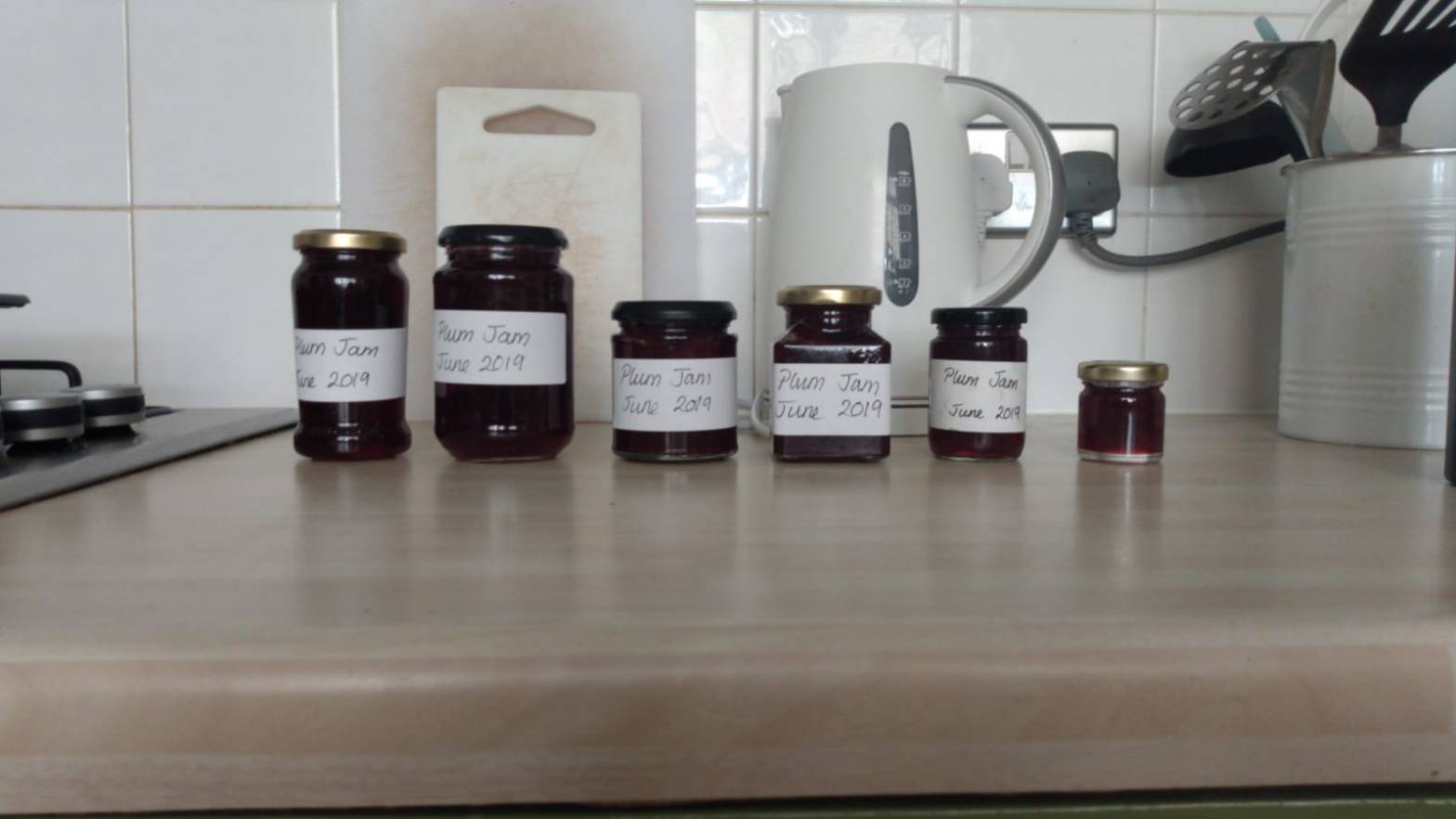Jam.
The humble preserve, the stalwart of the cupboard. On my kitchen table, it sits meekly behind the chocolate spread and fashionable nut butters, waiting for the moment it is selected to be spread on our breakfast toast. Ever-present in our cupboards, it is a go-to at any time of day, spread liberally on crumpets, scones and toast or inside a folded-over piece of bread as a late-night snack.
Basics or Bonne Maman, there’s no morsel as comforting or nostalgic as a jam sandwich.
Jam is one of those un-discussed staples, perhaps because it doesn’t often feature in dinner plans. Yet it is present in a great deal of those ‘Great British’ puds that have us reminiscing about school days – Jam Tarts, Jam Sponge Pudding, Jam Roly-Poly, Swiss Roll, even hot rice pudding out of the tin with a generous dollop of strawberry jam (although that might just be a personal family variant!). My childhood was full of these cheap-and-cheerful crowd pleasers, and jam was always there, the sweet but somehow frumpy companion that eventually found itself relegated to the back of the cupboard.
When, in 2018, I challenged myself to a ‘Year of Buying Nothing New’, I started saving my glass jars. Now that I was going to have to make all the birthday and Christmas gifts by hand, preserving quietly stepped forward and offered itself as a solution for a time-and-budget friendly gift. I was wary. I thought it would somehow be incredibly difficult. Preserving implies a certain alchemy, a scientific approach to concoctions requiring special instruments (a jam thermometer!), and I wasn’t sure I had it in me. This was the domain of my grandmothers, those women of the ‘Make Do and Mend’ generation who lived through the second world war, and for whom knowledge of plants and preserving was a survival skill. It wasn’t for the haphazard millennial attempting to cut her carbon footprint and save money. Turns out it isn’t that difficult, and I have made and distributed several different jams and chutneys to friends and family over the last couple of years which have largely been received with a level of delight few shop-bought items can achieve.
Arriving in 2020, I’m lucky to be in a position to incorporate my enthusiasm for preserving into my MA research. Alongside Claire and the community at Lewisham Unity, we’ll be journeying into the next phase of Jam&Jam, investigating how jam can be used to create inter-faith and inter-cultural points of connection, sharing stories and recipes, and journeying into the history of Catford and of cultures of preservation across the globe, which will culminate in a weekend event (involving a yurt!) at the end of May. I am also particularly excited to explore the dual-meaning of the word ‘jam’ not just as a means of preserving food but, of course, as an improvised musical event. On the third Sunday of the month, Lewisham Unity holds a ‘Drum Jam’, an opportunity to connect socially and spiritually through the medium of music. ‘Jamming’, in both senses of the word, will be very much a part of our event.
What do you do with a glut of plums? Who do you know who makes preserves? What are your memories of making, foraging (the fruit), eating jam? Whose job is it to preserve food? Why do we even bother, in an age and a city where we can (in theory) get hold of whatever we want whenever we want it? What is the purpose of preserving in the UK today? What is the relevance of preserving in your food culture? What happens when we meet creatively across cultures and faiths, within a specific locality? Over the next five months, I’ll be using this blog to answer some of these questions and to explore how, indeed, there is far more to jam than meets the ear.
